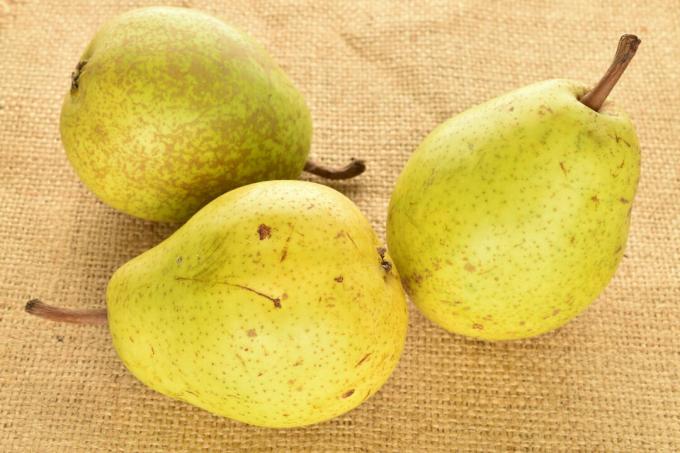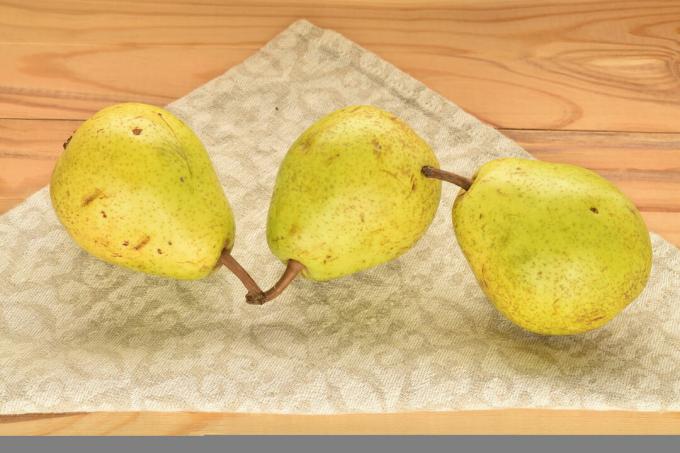The 'Alexander Lucas' pear not only offers aromatic fruit, but also a constant yield. The historic variety also finds a suitable place in smaller gardens.

The variety 'Alexander Lucas' is a cultivated pear (Pyrus communis) and impresses with its juicy sweet fruit with a pleasant aroma. We will show you the special features of the 'Alexander Lucas' and how you can soon successfully harvest your own pears in the garden.
contents
- Pear 'Alexander Lucas': profile
- history and origin
- Properties and taste of the Alexander Lucas pear
- Tips on growing and caring for Alexander Lucas pears
- Harvest and use 'Alexander Lucas' pear variety
Pear 'Alexander Lucas': profile
| synonyms | 'Lucas Alexander' |
| fruit | medium to large; intense yellow color |
| the taste | juicy, sweet, mildly aromatic |
| yield | high and regular |
| harvest time | from September |
| maturity | October to December |
| shelf life | very good; Can be stored for up to 6 months |
| growth | weak |
| climate | sunny and sheltered location |
| diseases and pests | resilient to disease |
history and origin
The pear variety 'Alexander Lucas', also known as 'Lucas Alexander', was first deliberately cultivated in a tree nursery in France in 1874. Previously, it was discovered growing wild on the Loire by Mr. Alexander Lucas.
Properties and taste of the Alexander Lucas pear
'Alexander Lucas' offers medium-sized to large fruits with a smooth skin and a cup-bellied shape. The pears are intensely yellow in color when fully ripe. The flesh is slightly yellowish and juicy, with a sweet and mildly aromatic taste.

Tips on growing and caring for Alexander Lucas pears
The Alexander Lucas pear is considered a hardy variety when it comes to diseases. A sunny, wind-protected location is optimal for cultivation. The fruits ripen there without any problems. The soil should be rich in nutrients for a good yield. With a height of up to four meters, the pear tree is one of the slow-growing varieties, whereby the rootstock plays an important role and has a strong influence on growth. The strain is triploid, meaning there are three copies of each chromosome. Therefore, the pollen is not suitable for fertilizing most other pear varieties. Conversely, fertilization of the Alexander Lucas pear is usually guaranteed by pollen from other Pyrus species. Suitable pollinator varieties are: 'Clapps Liebling', 'Conference', 'Dr. Jules Guyot', 'Good Louise' or 'Williams Christmas pear'. Nevertheless, unfertilized fruits occur.
Harvest and use 'Alexander Lucas' pear variety
The yield of 'Alexander Lucas' can be classified as high and regular. The first fruits are harvested from September. The pear reaches its optimum ripeness from October to December, but we do not recommend letting the fruit hang for too long, as this variety tends to drop fruit. After harvesting, the fruits can be stored for up to six months under optimal conditions. The pears can be eaten directly, made into compotes or boiled down.

